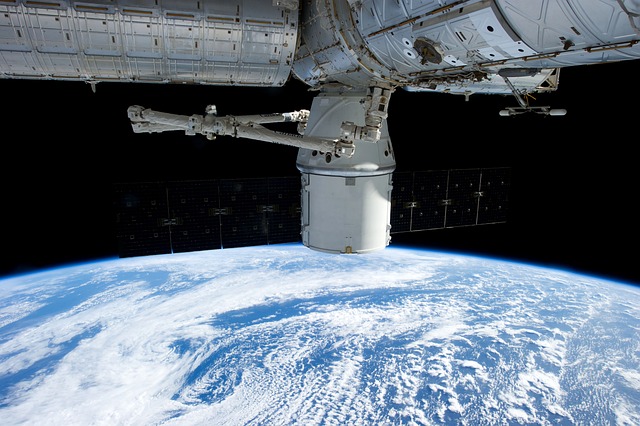NASA’s high-speed internet connectivity network, with speeds reaching up to 91 gigabits per second, enables real-time communication and data transfer between its facilities and spacecraft.
Exploring the Cosmos at Lightspeed: A Look at NASA’s High-Speed Internet Connectivity
When it comes to exploring the cosmos, time is of the essence. Every second counts and every piece of datais valuable. NASA understands this better than anyone, and that’s why the organization has built and maintains one of the most advanced and high-speed internet connectivity networks in the world. With speeds reaching up to 91 gigabits per second, NASA’s network enables real-time communication and data transfer, between its various facilities and spacecraft. In this post, we’ll take a closer look at NASA’s high-speed internet connectivity, from the fiber-optic cables that connect its facilities to the specialized antenna complexes that communicate with spacecraft in deep space.

NASA is known for its advanced technology and innovation, and the organization’s internet connectivity is no exception. NASA has built and maintains its own high-speed communications network, which is used to transmit data between its various facilities and spacecraft. This network is known for its high speeds, reliability, and security, making it an essential tool for the organization’s many missions.
NASA Internet Speed: How Fast Is It?
91 gigabits per second (Gbps)
In terms of internet speed, NASA has some of the fastest internet connectivity in the world. According to NASA, its network can transfer data at speeds of up to 91 gigabits per second (Gbps). This is much faster than the average internet speeds in the United States, which are around 100 megabits per second (Mbps).
If you want to test your internet speed, click here.

Why Does NASA Need this High-Speed Internet?
The high-speed internet is used to transmit large amounts of data, such as images and scientific data, back and forth between NASA’s various facilities, as well as to and from its spacecraft, including the International Space Station (ISS)
To achieve this high-speed, NASA uses a combination of fiber-optic cables and satellite communications, depending on the location of its facilities and missions. NASA’s fiber-optic network is made up of dedicated fiber-optic cables, which are used to connect NASA facilities and provide high-speed data transfer.

The Big Falcon Rocket (BFR): A Revolutionary Reusable Rocket from SpaceX
NASA’s internet network
NASA’s internet network is comprised of several components, including:
Deep Space Network (DSN)
This is a system of large antennas located in three locations around the world (Goldstone, California; Madrid, Spain; and Canberra, Australia) that provides communications support for deep space missions. The DSN is a global system of large antenna complexes that are used to communicate with spacecraft that are far away from Earth, such as those exploring the outer planets of our solar system. These antenna complexes have specialized high-gain antennas that are able to transmit and receive data at very high speeds, even over vast distances.
The Importance of Deep Space Communication for NASA
Near Earth Network (NEN)
The NEN provides communications support for near-Earth missions, such as the International Space Station (ISS). The NEN is a network of antennas located at various NASA facilities and allows for real-time communication with spacecraft and the ISS.
Space Network (SN)
The SN is a space-based system that provides communication services for low-Earth orbit missions. The SN consists of two Tracking and Data Relay Satellites (TDRS) that provide a high-speed link between spacecraft and the ground, allowing for real-time communication and data transfer.
These components work together to form NASA’s integrated communication network, providing fast and reliable internet services for all of NASA‘s missions.
Which Country Has How Many Satellites in Earth Orbit
Will NASA’s internet speed increase in 2024?
There is no clear information in the search results to suggest that NASA’s internet speed will increase in 2024. However, it is worth noting that NASA’s internet speed is already incredibly fast, with a speed of approximately 91 gigabits per second. This speed is crucial for NASA to carry out its important tasks, as they handle large amounts of data that require high-speed internet. While there is no information on whether NASA’s internet speed will increase in 2024, it is safe to assume that they will continue to use the fastest and most reliable internet available to them.
How does NASA achieve such high internet speeds?
NASA achieves such high internet speeds by using a combination of cutting-edge technology and a high-speed fiber-optic network. NASA researchers ran a test on a testbed network on their ESNet “shadow internet” network to achieve the staggering speed of 91 gigabits per second. They sent data between NASA’s Goddard Research Centre at Maryland and a conference in Denver called the Supercomputing Conference 2013. They could achieve these speeds thanks to the low number of hops the data had to travel between the two locations. NASA’s network is incredibly fast, reaching 91 gigabits per second, which is about 13,000 times faster than the average home internet connection. As NASA continues pushing space exploration’s boundaries, the need for high-speed communication networks will only increase
Fastest internet ever recorded
The fastest internet speed ever recorded was achieved by scientists from the National Institute of Information and Communications Technology (NICT), Japan in 2022. They broke the previous world record of 178 terabits per second (Tbps) set by scientists at University College London in 2020 by scaling up the fastest internet speed record to 319 terabits per second (Tbps) over a distance of 3,001 km
China Launches World’s Fastest Internet Network: A Game-Changer for Business, Technology, and Security
China has initiated the deployment of what it claims to be the most advanced internet network globally, offering speeds several times faster than existing networks. The network, boasting a capability of 1.2 terabits (or 1,200 gigabits) per second, has the potential to transfer data equivalent to 150 movies in just one second, as reported by Chinese technology manufacturer Huawei.
While these speeds remain theoretical and are unlikely to reach consumers’ homes in the near future, the development of a more robust and faster internet service carries significant implications for various sectors. This includes enhanced business operations, expedited information transfers, advantages in stock trading, and considerations related to national security.
What is the average internet speed in the world?
According to the Speedtest Global Index, as of March 2023, the average internet speed in the world is 98.22 Mbps
Countries with the fastest internet speeds
According to the search results, the countries with the fastest internet speeds are as follows:
Top 10 Countries with the Fastest Mobile Internet Speeds (Mbps) – (2021):
- United Arab Emirates – 238.06
- South Korea – 202.61
- Norway – 177.72
- Qatar – 172.18
- China – 165.38
- Kuwait – 157.18
- Saudi Arabia – 155.97
- Cyprus – 144.64
- Bulgaria – 142.27
- Switzerland – 135.70
Top 10 Countries with the Fastest Broadband Internet Speeds (Mbps) – (2021):
- Monaco – 261.82
- Singapore – 255.83
- Hong Kong (China) – 254.70
- Romania – 232.17
- Switzerland – 229.96
- Denmark – 227.91
- Thailand – 225.17
- Chile – 217.60
- France – 214.04
- South Korea – 212.57
Tracing the Evolution of the Internet: From ARPANET to Today’s Global Network
In its early days, the internet was a far cry from the expansive and essential global network it is today. The internet first came into being in the late 1960s as a way for government agencies and research institutions to share information. It was called the ARPANET, named after the Advanced Research Projects Agency (ARPA) within the U.S. Department of Defense that funded its development. At this time, the internet was not available to the general public and was used primarily by scientists and researchers.

